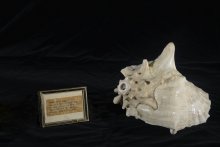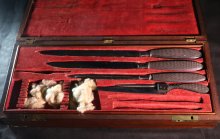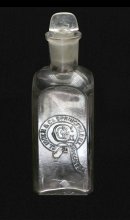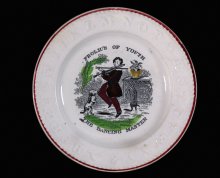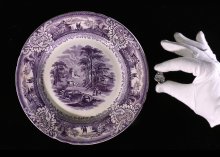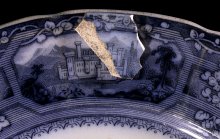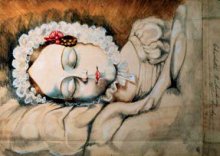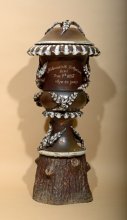Civil War Era (1848-1877)
The period that opened with the adoption of a new state constitution saw continued growth in agricultural and industrial production. The state’s population grew rapidly with settlers from other states but especially due to immigration from German states and Ireland. Growing debate over the role of slavery in the life of the nation raised tensions to a level that finally sundered the Union. Illinois’ own citizens, many of whom had settled here from the Upland South, were divided over the issue. As the home of Stephen A. Douglas, a national leader of the Democrats, and his skilled, Republican challenger in the form of Abraham Lincoln, Illinois was a crucial battleground during the decade that ended in war. The advent of photography would revolutionize the way we captured the harsh realities of war and forever changed the way we look at ourselves and the world. The state contributed mightily to the Union cause, providing its commander-in-chief numerous military leaders, more than 220,000 soldiers and sailors, and large volumes of agricultural and manufactured products.
This queen conch shell’s tip was cut off to turn it into a horn. It was used to call slaves in from the fields of a plantation outside Memphis, Tennessee. Private James H. Williams, of Petersburg, Illinois, acquired this shell at the close of the Civil War when he was serving in Company A of the 152nd Illinois Infantry.
These naturalization papers were issued to German native Pangratz Boll in 1860, granting him American citizenship. Boll immigrated to the United States in 1854 at age 28 with his wife and three children, one of whom died at sea on the voyage over. He eventually settled in Greenville, where he worked for a boot manufacturer until he was appointed postman in 1870 by President Grant.
Dr. John Miles Waite used this amputation kit as a surgeon on the 1st Illinois Cavalry during the Civil War. Waite was born in Richfield, Ohio, in 1834. He later attended the Cleveland College of Medicine and then opened a pharmacy in St. Louis. When the Civil War broke out, he enlisted as a private to escape domestic discord with his young bride. After the war, he divorced his wife and moved to Mound City, Illinois, where he became one of Pulaski County’s first physicians.
The Eastern Massasauga Rattlesnake is a small, venomous snake recently listed as threatened by the U.S. Fish and Wildlife Service. It persists in only a few locations in Illinois, Indiana, Iowa, Michigan, New York, Ohio, Pennsylvania, and Wisconsin. The Fish and Wildlife Service describes the Massasauga as “a small snake with a thick body, heart-shaped head and vertical pupils.”
This bottle was made for Glidden & Co. at 101 North Fifth Street between 1869 and 1875. Henry H. Glidden started in business in 1868 by becoming a partner in Melvin & Glidden Wholesale and Retail Druggists. Melvin left the business in 1870, and it became Glidden & Company. Henry H. Glidden was described in an Illinois State Journal article as a “highly accomplished and intelligent gentleman, intimately acquainted with the drug business in all its departments.”
The scene in this child’s plate may have been hand colored by a child of less than 10 years old. Children typically started working at the potteries in Staffordshire, England, by the age eight, but some started as young as five or six years old.
This plate fragment came from the home site of Alexander Clark, an African American blacksmith living in New Philadelphia, Illinois, in the mid-1800s. It shows a portion of a bridge and person bridling a horse, an image that can also be found near the center of a transfer print plate with the image “Rural Scenery.”
Rarely are completely intact artifacts found during archaeological explorations. It is up to archaeologists and anthropologists to use their knowledge and skill to find the missing pieces in order to tell the rest of the story. This plate fragment was recovered from excavations at New Philadelphia, an African American settlement in western Illinois founded by Free Frank McWhorter, a former slave.
Today in the United States, many people feel very uncomfortable looking at a death portrait. However, in earlier times, it was an accepted means of remembering and memorializing someone who had died. In the 19th century, many families lost children to accident and disease.
The urn harks back to ancient Greek funeral cremation urns. The interest in Greece and Rome—the Neo-Classical Revivals of the 18th and 19th centuries—inspired architecture and decoration that emulated these ancient cultures.
Pages






